“Electric Man” – George R. Moore, a then seventy-year-old retired miller of LowelL Mass., USA.
[Note: The author believes that George R. Moore of Lowell, Mass., is not the same person as Professor George Moore, the Canadian “inventor” of the more well known “Steam Man”.]
Walking Automaton – Patent # 454,570 granted June 23, 1891 (filed Jan 30, 1891).
George R. Moores’ “Walking Automaton” first hit the press in August of 1890, where it was described as an Electric Frankenstein. It was built to push an Invalids Chair, and its appearance was so fine that it was considered ornamental as well as useful.
The automaton was made from wood and steel; the chair was made of light wicker work like those of a half grown trotting sulky of the era. There is a footboard which is used for carrying the batteries for the electric motors. The man stands directly behind the chair. As far as all appearances go the automaton appeared to be about twenty five years old. He is connected with the chair at about the point at which the human diaphragm would be located.
There is a pushing bar above this on which his neatly gloved hands rest but this was more for vanity than utility. He was dressed in the height of fashion being attired in a new suit of gray mixed goods, white shirt with collar and cuffs to match and a soft felt hat. He had a number of changes of clothing and could be dressed accordingly. He wore a No 6 shoe four wide, and sported a Louis Napoleon moustache.
The action of the feet and legs which the inventor has reached with this machine, is a remarkable imitation of a human being. Reportedly there was none of the jerky motion that is so commonly seen in mechanical figures or the era. Its action, as described at the time is that “Each foot as it leaves the ground rises naturally on the toe with the same springy motion that is characteristic of the graceful walk among men and women. As in the taking of the foot from the ground so in replacing it at the end of the step, the motion is free from jog or jar, and is entirely natural. “
It was Moore's intention to make his electric man polite as well as useful and to that end his right arm, which was said to have more joints and bones than the corresponding member of the human body will be so arranged that he can raise his hat gracefully as he receives a fare. [Note: The patent does not show any mechanism in the right arm].
He began work upon his electric man some time in 1889, adopting to some extent the principles of a mechanical horse, upon which he had been at work off and on for a dozen years [ie since ~1878].
Moore had other mechanical wonders besides the electric man to show. In the horse, as in the man, he had reached an almost perfect imitation of the natural movements of the feet and legs, every joint being fashioned in close imitation of the model which he had followed. The mechanical horse was about as large as a forty-five pound dog, and could strike a gait that is at the same time stylish and fast. He would either trot or pace at the will of his master.
In November of 1900, Moore’s Walking Automaton was exhibited at the original Madison Square Motor Show. It was described as “The most ludicrous feature of the lot is the walking automaton man, who pushes an invalid chair before him. This was built by George R. Moore,at Westford, Mass., nine years ago.”
Unlike the later Perew Electric Man, this automaton appears to actually provide the traction to push the chair.
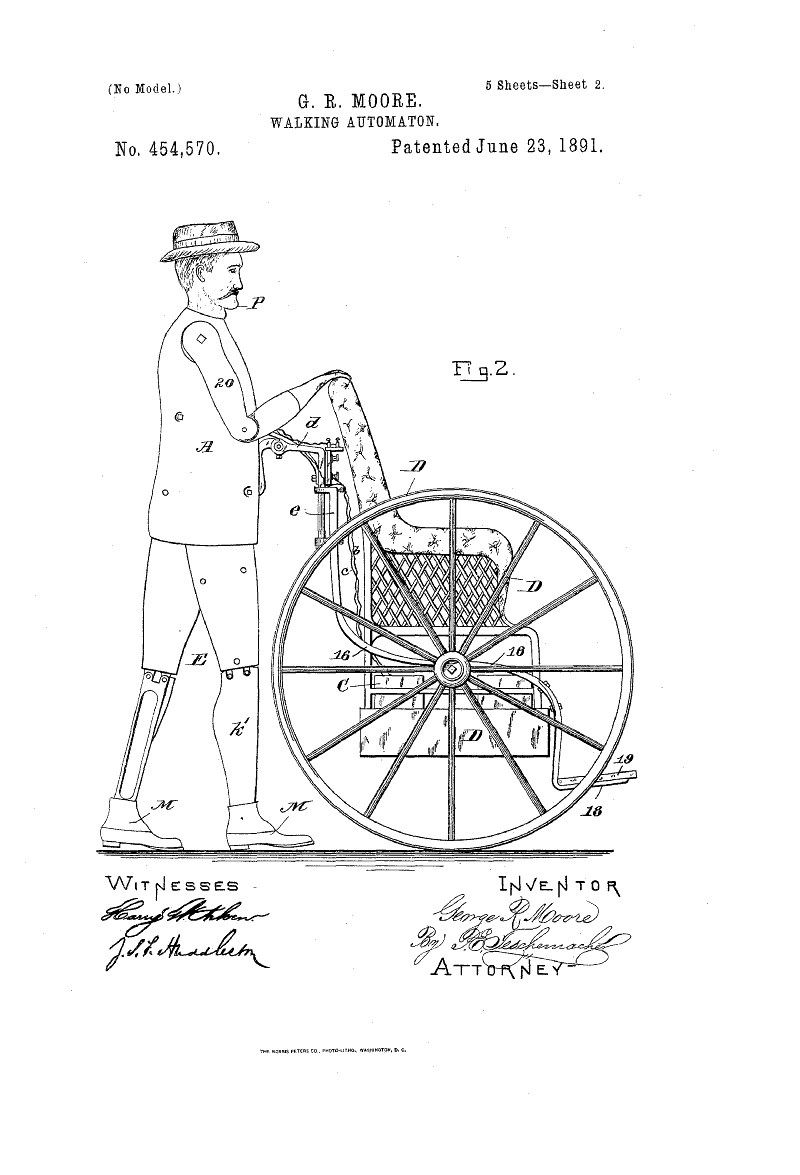
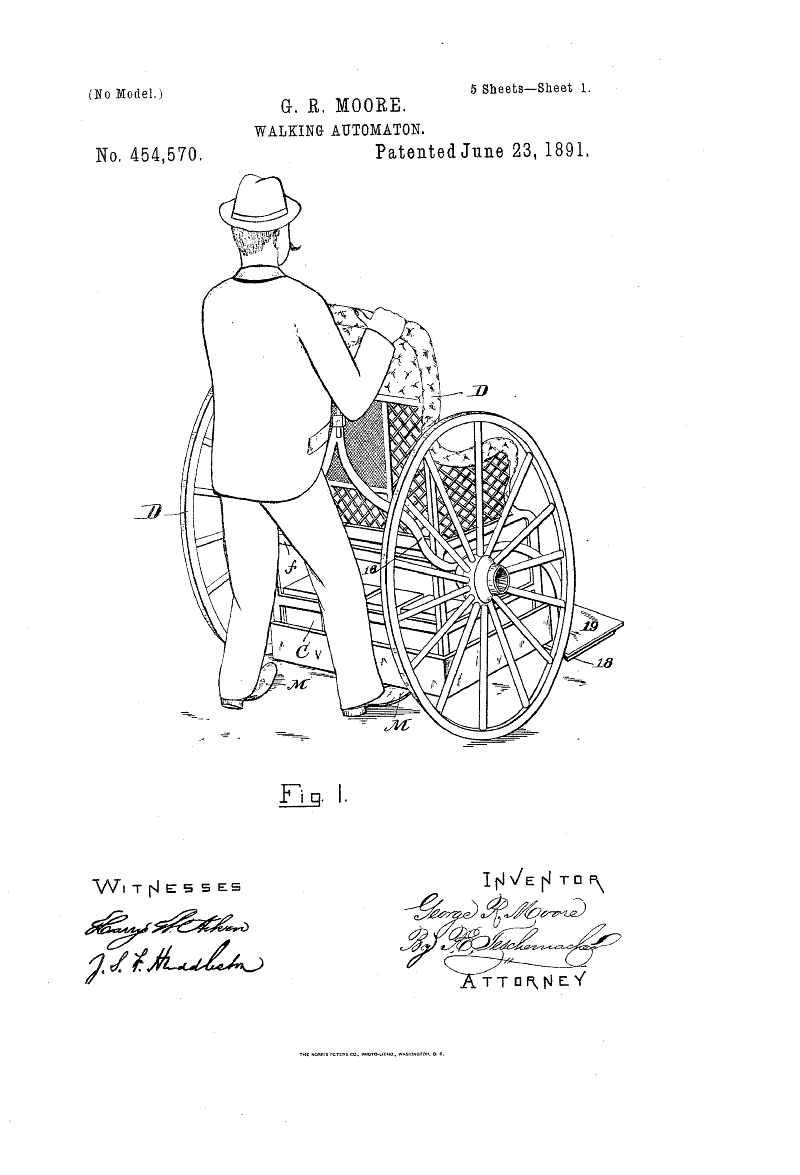
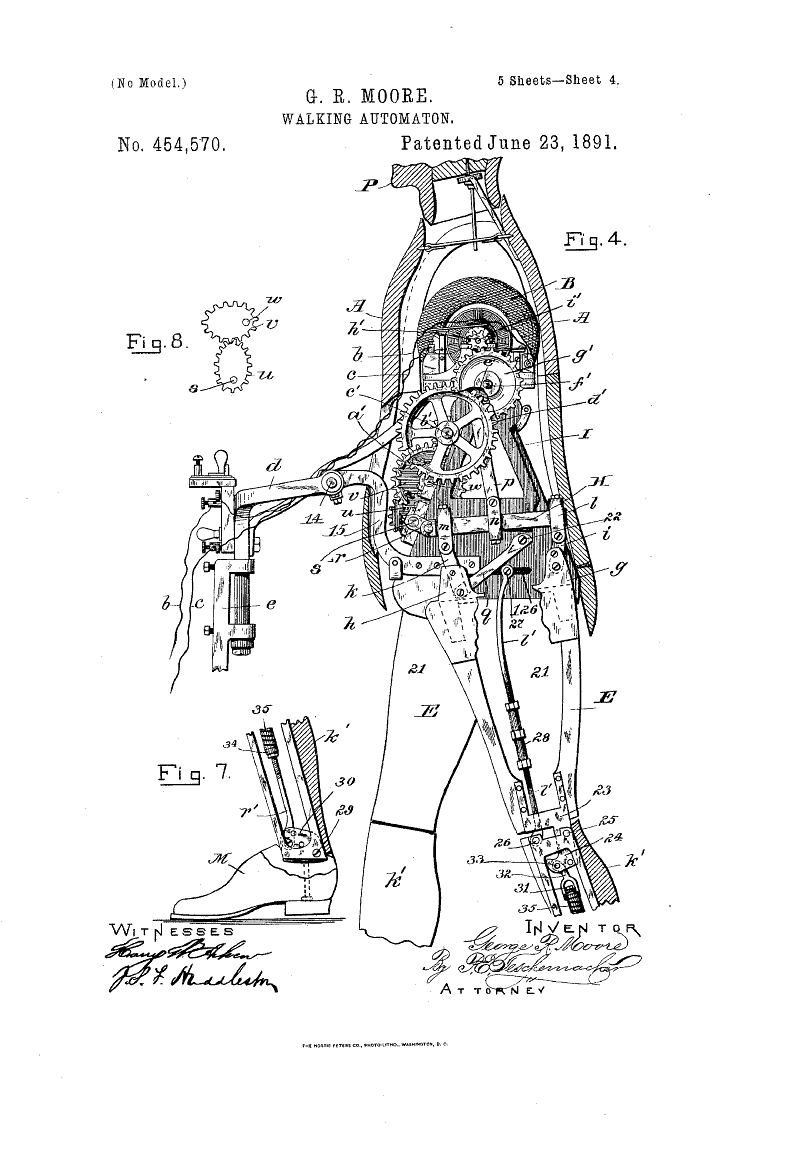
Source Articles:
The Atlanta Constitution 08 Aug 1890 p2
AN ELECTRIC FRANKENSTEIN
A Mechanism Both Ingenious and Useful-Moves a Perambulator
LOWELL, Mass., August 7 —George R Moore, of this city a retired mill owner has constructed an electric man that walks about with every appearance of life and is made to be useful as well as ornamental by pushing a perambulator. The chair over which he presides is a light wicker work affair like those of a half grown trotting sulky. There is a footboard which is used for carrying the batteries which put the propelling power into the electric man's muscles of wood and steel.
The man stands directly behind the chair.
If he were flesh and blood he would just come inside the limits as a light weight sparrer and as far as all appearances go would be about twenty five years old. He is connected with the chair at about the point at which the human diaphragm is popularly supposed to be located
There is a pushing bar above this on which his neatly gloved hands rest but this is more for vanity than utility. He is dressed in the heighth of fashion being attired in a new suit of gray mixed goods white shirt with collar and cuffs to match and a soft felt hat. He has a number of changes of clothing and can be dressed for the fourth of July or Christmas weather just like any man. He wears a No 6 shoe four wide, and sports a Louis Napoleon moustache.
Met upon any thoroughfare he would be marked for his general style and dignified bearing. Just at present his complexion is a little off color but he is to have this treated with the most approved toilet preparations that the paint pot can produce.
The action of the feet and legs which the inventor has reached with this machine, is a remarkable imitation of a human being There is none of the jerky motion that is so commonly seen in mechanical figures. Each foot as it leaves the ground rises naturally on the toe with the same springy motion that is characteristic of the graceful walk among men and women. As in the taking of the foot from the ground so in replacing it at the end of the step, the motion is free from jog or jar, and is entirely natural The electric man is provided with a six horse power battery which is simply sufficient to enable him to push the fattest dowager up Corey Hill.
It is Mr Moore's intention to make his electric man polite as well as useful and to that end his right arm, which is said to have more joints and bones than the corresponding member of the human body will be so arranged that he can raise his hat gracefully as he receives a fare.
The New Oxford Item 07 Nov 1890 p3
An Electric Man.
In the way of novel electrical inventions there will hardly be anything more interesting than the achievements of George R. Moore, a seventy-year-old retired miller of LowelL Mass. The Lowell Citizen, describing his latest freak, says:
This is an electric man that walks and does a number of things as perfectly as though it were a human being, He began work upon his electric man something like a year ago, adopting to some extent the principles of a mechanical horse, upon which he has been at work off and on for a dozen years [1878]. He regards his electric man as his chef d'oevre, and well he may, for it has what is rarely seen in mechanical devices, an almost perfect imitation of the motions of the human body. Mr. Moore has other mechanical wonders besides the electric man to show. In the horse, as in the man, he has reached an almost perfect imitation of the natural movements of the feet and legs, every joint being fashioned in close imitation of the model which he has followed. The mechanical horse is about as large as a forty-five pound dog, and can strike a gait that is at the same time stylish and fast. He either trots or paces at the will of his master, and is always in fine condition for a spin on the mile ground.
The New York Times 04 Nov 1900
MOTOR SHOW IS OPENED
Novel Exhibition Drew Thousands to Madison Square Garden.
FIRST NIGHT A BIG SUCCESS
Up-to-Datc Vehicles Moved by All Means Except Horses Displayed Amid Attractive Decorations.
….
…
The most ludicrous feature of the lot is the walking automaton man. who pushes an invalid chair before him. This was built by George R. Moore, at Westford, Mass., nine years ago.
…
A more favorable report was given by The New York Daily Tribune, Sunday November 4 1900.
"As striking a novelty as anything in the show is an automaton man, who is actuated by an electric motor and pushes an invalid chair in front of him. He is dressed in full walking costume, with rouge on his cheeks and a wig on his head".
Portrait of George R. Moore and related material supplied by a relative, Bill Johnston.
If you know of the whereabouts of the Walking Perambulator or its patent model, thought to be in a museum, please post a comment below or contact WingedSpur here.
Moore also patented a Tellurian, essentially an Orrery with an emphasis on the Earth, Moon and Sun to demonstrate aspects such as eclipse, etc.
Image courtesy of Bill Johnston.
See other early Steam Men and Walking Machines here.

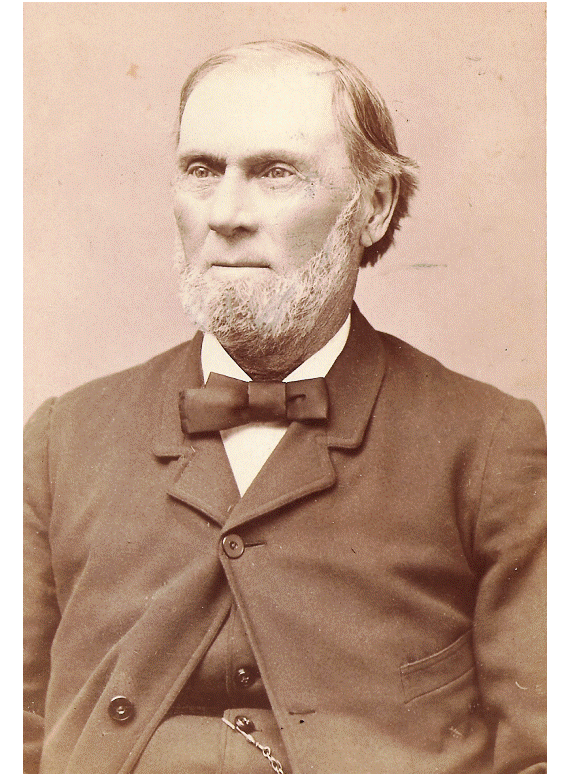
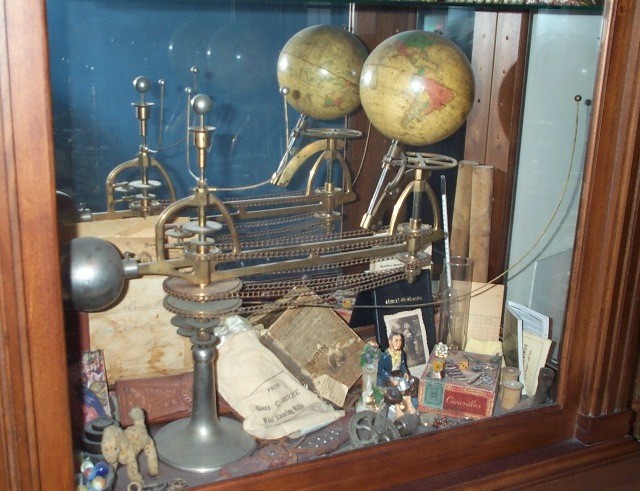
I am looking to contact Bill Johnston regarding George R. Moore’s inventions and his worsted and scouring mills. I live in the farmhouse that George Robert’s son George C. Moore built. ( Nabnassett Pond Farm ) Westford, Ma. I would like any info. and photos if possible of George R. and George C. Moore’s accomplishments. I am researching, The Moore’s and Edwards’ of Brookside and Nabnassett areas of the town of Westford. They were a large part of the towns’ history from the 1850’s to the 1920s.In about 2 years the Westford Historical Society and Museum will be putting on an Exhibition Of Brookside and Nabnassett. I am gathering information to be given to them.
Thank you.
Richard McLaughlin
Westford, Ma.
He was my great-great-grandfather. You are correct, he was not the same person as Professor George Moore from Canada. I actually saw the referenced horse as a youngster but unfortunately do not know what happened to it. Additional information submitted to your provided email address.